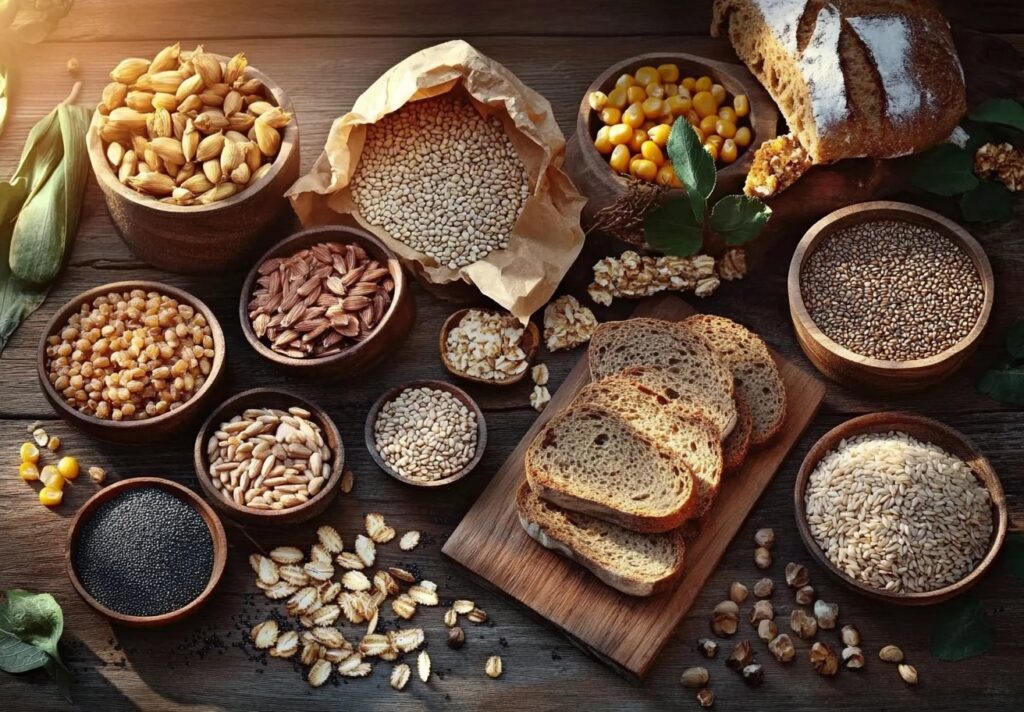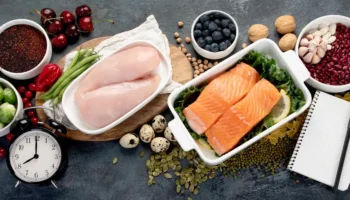As women approach their 40s, their bodies undergo hormonal shifts that can bring about symptoms like weight gain, bloating, mood swings, and sluggish digestion. One of the best ways to support your body through this transition is by eating a fiber-rich diet. High-fiber foods help balance hormones, support gut health, reduce cholesterol, and keep blood sugar stable.
Scientific studies have shown that fiber plays a crucial role in hormone regulation. A 2021 study published in The Journal of Nutrition found that dietary fiber intake was associated with lower levels of estrogen, reducing the risk of hormone-related cancers such as breast cancer. Additionally, fiber supports gut microbiome diversity, which is essential for metabolizing estrogen and other hormones efficiently. Research from the American Journal of Clinical Nutrition also highlights that higher fiber consumption is linked to better insulin sensitivity, reducing the risk of type 2 diabetes and metabolic syndrome, which can become more prevalent during pre-menopause.
If you’re looking for the best foods to ease pre-menopause symptoms, we’ve got you covered! Here are the top 10 high-fiber foods that every woman over 40 should include in her diet. Plus, there’s a delicious high-fiber recipe at the end!

1. Chia Seeds
- Fiber content: 10 grams per ounce
- Why you need them: Chia seeds are packed with fiber, omega-3s, and antioxidants. They help regulate digestion and fight inflammation, which is crucial during hormonal changes.
- Scientific Insight: Omega-3s found in chia seeds have been shown to reduce inflammation and improve cardiovascular health, which becomes increasingly important as estrogen levels decline.
- How to eat: Sprinkle on yogurt, blend into smoothies, or make chia pudding.
2. Flaxseeds
- Fiber content: 8 grams per ounce
- Why you need them: Flaxseeds contain lignans, which help balance estrogen levels and reduce the risk of hormone-related cancers.
- Scientific Insight: A 2019 meta-analysis in Nutrients found that flaxseed consumption led to significant reductions in menopausal symptoms, including hot flashes and night sweats.
- How to eat: Add to oatmeal, smoothies, or homemade energy bars.
3. Lentils
- Fiber content: 15 grams per cup (cooked)
- Why you need them: A plant-based protein powerhouse, lentils keep you full and stabilize blood sugar, preventing energy crashes.
- Scientific Insight: Lentils are rich in resistant starch, which has been shown in The American Journal of Gastroenterology to support gut health and reduce bloating, a common pre-menopause symptom.
- How to eat: Use in soups, salads, or as a meat substitute in tacos.
4. Avocados
- Fiber content: 10 grams per avocado
- Why you need them: Healthy fats and fiber make avocados a fantastic food for hormone balance and gut health.
- Scientific Insight: Avocados contain beta-sitosterol, a plant compound known to help regulate cortisol, the stress hormone that can spike during pre-menopause.
- How to eat: Mash on toast, blend into smoothies, or add to salads.

5. Quinoa
- Fiber content: 5 grams per cup (cooked)
- Why you need it: Quinoa is a gluten-free grain rich in fiber and protein, perfect for maintaining muscle and metabolism during perimenopause.
- Scientific Insight: Research published in The British Journal of Nutrition found that whole grains like quinoa help reduce inflammation and support heart health, both of which are critical for women over 40.
- How to eat: Cook as a side dish, add to salads, or use in grain bowls.
6. Berries (Raspberries, Blueberries, Blackberries)
- Fiber content: 8 grams per cup (raspberries)
- Why you need them: Berries are high in antioxidants and fiber, supporting skin health and digestion.
- Scientific Insight: A 2020 study in The Journal of Agricultural and Food Chemistry found that anthocyanins in berries help reduce oxidative stress and support cognitive function, which can decline during hormonal shifts.
- How to eat: Enjoy fresh, in yogurt, or blended into a smoothie.
7. Broccoli
- Fiber content: 5 grams per cup (cooked)
- Why you need it: This cruciferous vegetable contains compounds that help detoxify excess estrogen and reduce bloating.
- Scientific Insight: Indole-3-carbinol, found in cruciferous vegetables, has been shown in Cancer Prevention Research to support estrogen metabolism and reduce the risk of breast cancer.
- How to eat: Roast, steam, or add to stir-fries.
8. Oats
- Fiber content: 4 grams per cup (cooked)
- Why you need them: Oats are rich in beta-glucan, a type of fiber that helps lower cholesterol and supports heart health.
- Scientific Insight: A study published in The American Heart Journal confirms that beta-glucan can significantly lower LDL cholesterol and reduce cardiovascular disease risk.
- How to eat: Enjoy as oatmeal, in granola, or blended into pancakes.
9. Sweet Potatoes
- Fiber content: 6 grams per medium potato
- Why you need them: Rich in fiber and vitamin A, sweet potatoes support skin health and digestion.
- Scientific Insight: Vitamin A plays a crucial role in skin elasticity and hydration, which can decline with age, as noted in The Journal of Dermatological Science.
- How to eat: Roast, mash, or use in soups.
10. Dark Chocolate (85% or Higher Cocoa)
- Fiber content: 11 grams per 100g bar
- Why you need it: Dark chocolate is a surprisingly good fiber source and contains magnesium, which helps with mood swings and muscle relaxation.
- Scientific Insight: A study in The Journal of Affective Disorders suggests that magnesium can help alleviate symptoms of anxiety and depression, which can be exacerbated during pre-menopause.
- How to eat: Enjoy a small square after meals for a healthy treat.

Recipe: High-Fiber Hormone-Balancing Smoothie
Ingredients:
- 1 cup unsweetened almond milk
- 1 tbsp chia seeds
- 1 tbsp flaxseeds
- ½ cup raspberries
- ½ avocado
- ¼ cup oats
- 1 tsp cacao powder (optional)
- 1 tsp honey (optional)
- Ice cubes
Instructions:
- Add all ingredients to a blender.
- Blend until smooth.
- Pour into a glass and enjoy a fiber-rich, hormone-balancing boost!
The Bottom Line
Adding high-fiber foods to your diet is one of the easiest ways to manage pre-menopause symptoms and support long-term health. Aim to include a variety of these fiber-rich options in your meals daily for optimal benefits.
Want more health tips? Make sure to follow for more pre- menopause-friendly nutrition advice!







